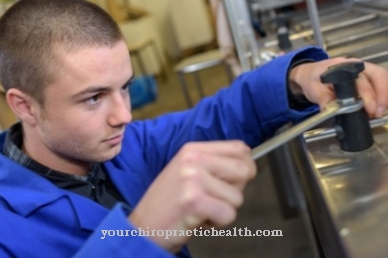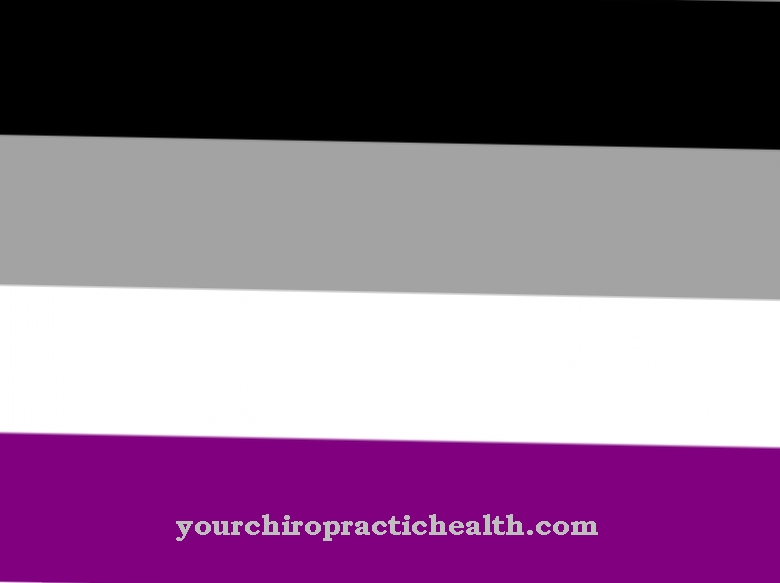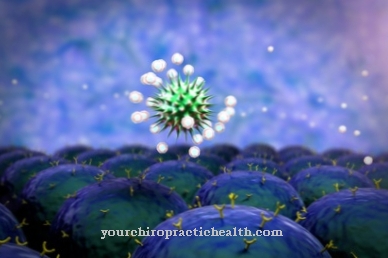The Motility corresponds in the broadest sense to active mobility. In medicine, the term primarily refers to the involuntary movements of the peristalsis or is used for the ability of muscles to contract, which in turn is associated with the integrity of the nervous system. In neurology, a failure of motility is called akinesia.
What is the motility?

In the expanded meaning, motility is understood as the ability to actively move. This is to be distinguished from the property of mobility, which is considered a person's passive mobility. Biology and medicine define the concept of motility more narrowly. In these specialist areas, motility corresponds to the involuntary movement processes that take place in every person's body. These include, for example, the movements of the bowel, also known as peristalsis.
If the involuntary movement activity is reduced, it is called hypomotility. In the case of excessive involuntary movement activities, the doctor speaks of hypermotility. What exactly the term motility refers to depends on the particular field of medicine. In ophthalmology, for example, motility refers to the ability of the eyes to move.
The term can also be used when it comes to motor skills. In this context, the term usually refers to the ability of skeletal muscles to move.
Function & task
The concept of peristalsis is closely related to that of motility in its narrower definition. The movements of the intestine are involuntary movements and are controlled by an autonomic nervous system. Peristalsis corresponds to the muscle activity of the esophagus, intestines and stomach. The urinary tract also has peristalsis. The propulsive peristalsis corresponds to ring-shaped constricting contractions of smooth muscles, which take place involuntarily in a certain direction and serve to transport certain hollow organ contents. This type of peristalsis is largely shaped by the natural rhythm of the smooth muscles, especially in the stomach and ureter. The remaining part corresponds to local reflexes that play an essential role, especially in the intestine. The parasympathetic nervous system promotes peristalsis. The involuntary movements are inhibited by the sympathetic nervous system.
The propulsive peristalsis must be distinguished from the non-propulsive peristalsis, which is also part of the motility in the narrowest sense. The non-propulsive peristalsis takes place exclusively in the intestine and serves to mix the ingested and digested food. The retrograde peristalsis is a transport movement in the opposite direction of the propulsive peristalsis. It is also part of the motility.
Furthermore, reflex movements are part of the motility. In addition to self-reflexes, these can also be external reflexes. Reflective movements are always triggered by a certain stimulus that causes certain muscles or muscle groups to contract via a reflex arc. A well-known reflex is, for example, the blink reflex, which corresponds to a protective reflex.
The heart movement is also part of the motility. The same applies to the breathing movements and the contractions of the vascular muscles, which are directly related to blood pressure and circulation.
When the term motility is used in its expanded definition, the term primarily refers to muscle activity and thus corresponds to the ability to actively contract muscles. This ability depends on intact innervation. The contraction of muscles only works if motor-conductive nerves connect the muscles with the central nervous system and all movement-involved brain or spinal cord regions are in an intact state.
You can find your medication here
➔ Medicines for muscle weaknessIllnesses & ailments
In the broadest sense, diseases or lesions of the central nervous system disrupt a person's motility. In connection with disturbed motility through the nervous system, the doctor differentiates between increased, decreased and completely absent motility. The first phenomenon is called hyperkinesis. Decreased motility is called hypokinesis and lack of motility through the nervous system is known as akinesia.
Hyperkinesis always occurs when the inhibitory mechanisms in the central nervous system are disturbed. These mechanisms are part of motion control. Damage or failure of the inhibiting regions no longer allows adequate control of movement impulses. Unwanted movements such as tics arise. These movements occur in an athetotic or choreate variant. Usually accompanied by symptoms there is a decrease or at least a fluctuation in muscle tone.
Lesions in the extrapyramidal motor system in particular can interfere with movement control. An accident can precede these lesions. But they can also be related to infections, inflammatory diseases of the central nervous system, degenerations or compressions caused by tumor diseases. Affective psychoses can also promote hyperkinesis. The same is true for drugs such as psychotropic drugs.
A sedentary lifestyle in the sense of hypokinesis, on the other hand, is a key symptom of Parkinson's disease and also results from disorders in the extrapyramidal system. Akinesia is the complete inability to move, which is also due to the extrapyramidal system.
In contrast to hypo- and hyperkinesis, mental illnesses such as schizophrenia or psychosis are unlikely to be the cause of akinesia. In cardiology, the term akinesia is sometimes used in echocardiography when a portion of the heart wall has scarred after damage to the heart.
The term hypokinesis can also be used in cardiology. In this case, the term refers to a pathological reduction in cardiac wall mobility, as can be detected on ultrasound. The phenomenon occurs on the one hand less frequently and on the other hand slower movements of the heart walls. This phenomenon is also considered to be a long-term consequence of heart injuries caused by heart attacks or coronary heart disease.



.jpg)








.jpg)



.jpg)










.jpg)
